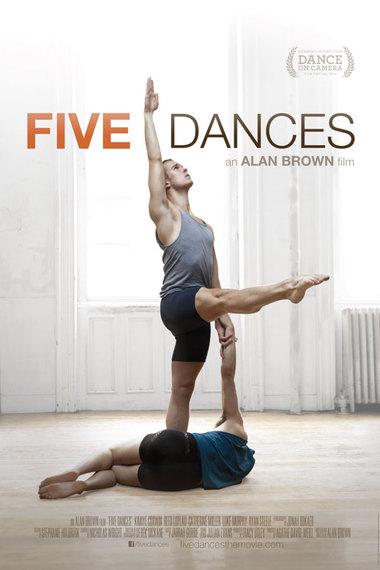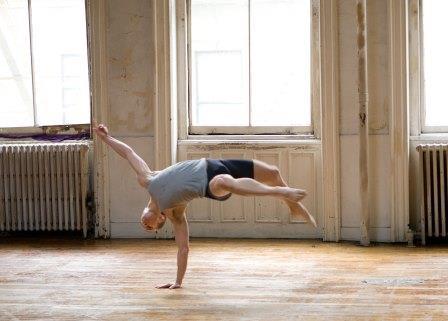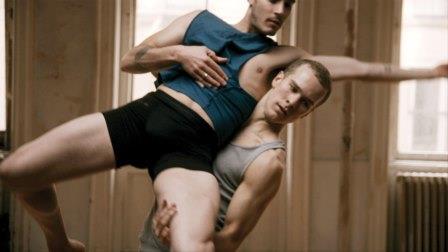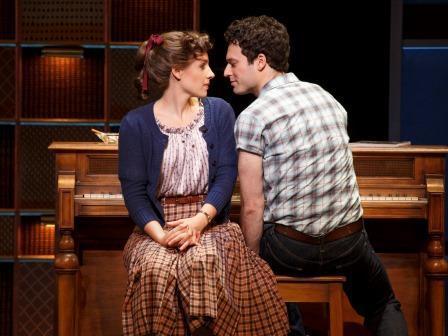Must an artist's soul be tortured in order to produce art? The stereotype of the starving artist who suffers for his art is far from the reality of creative types who muster the resolve to keep working. When it comes to making art, lost time is not so much a case of lost money as it is of lost opportunities.
Whether one looks at the life of a debauched genius like Mozart or more introverted, antisocial types, it soon becomes obvious that each person must struggle to find, experience, embrace, and understand his own artistic process.
In her fascinating OpEd piece in The New York Times (entitled Is Music the Key To Success?), Joanne Lipman lets heavy hitters from Alan Greenspan to Andrea Mitchell; from Paul Allen to Paula Zahn talk about the impact their music studies had on their adult life. As reporter Chuck Todd (who at age 17 was principal horn player in Florida's All-State Orchestra) states:
Two new productions look at artists in the midst of their creative process as they work on honing their craft. In each case, the audience watches an individual follow an uncharted path leading from a place of extreme discomfort in a personal and/or professional situation to the moment of truth when they break through, come to grips with who they really are and can finally focus their energy on what they want to do with their talent. In the following video, Barbara Cook reminds her audience that "It's Not Where You Start" (a song from 1973's Seesaw, with music by Cy Coleman, lyrics by Dorothy Fields).
* * * * * * * * * *
Many dance films focus on the behind-the-scenes life of a ballet company or a Broadway musical. Some of the fictional narratives (The Turning Point, The Red Shoes, Black Swan) feature a dominant authority figure -- an impresario or choreographer whose narcissistic personality delights in aggravating, humiliating and manipulating his dancers (who are often treated like children).
Such films may build toward an opening night crisis (an understudy stepping in to cover, an injured lead performer, or the breakdown of a romantic relationship between two strong personalities). One rarely gets to see a dance film whose style is intensely intimate and quietly introspective.
Written and directed by Alan Brown (with choreography by Jonah Bokaer), Five Dances comes remarkably close to achieving its objective by concentrating on the process of creating a modern dance piece. As Brown explains:
![2013-12-23-five_dances_poster.jpg]()
Poster art for Five Dances
The protagonist of Five Dances is 18-year-old Chip (Ryan Steele), a young man who won a scholarship from the Joffrey Ballet. Shortly after arriving in New York, Chip started to work with Anthony (Luke Murphy), a choreographer creating a modern dance piece for a gala event. The other dancers in the ensemble are Theo (Reed Luplau), Cynthia (Kimiye Corwin) and Katie (Catherine Miller).
In many ways, Five Dances is a coming-of-age story about a teenager who has succeeded against all odds. Chip's mother is an extremely needy alcoholic and he has never really known his father. The simple fact of escaping Kansas has allowed him a chance to pursue his artistic dreams (even though he can barely articulate what those dreams might be). Chip's physical strengths are obvious; the depth of his emotions and the extent of his self awareness remain to be seen.
Alone in a big city, Chip is the kind of person who keeps his cards held closely to his chest. He's not particularly emotive or willing to open up about himself and his family. When discovered lying in his sleeping bag in the company's Soho dance studio, he asks a fellow dancer not to let the others know about his living situation.
![2013-12-23-one_handed_Ryan_Steele.jpg]()
Ryan Steele as Chip in Five Dances
What keeps Chip going is his dedication to his art, a strong sense of perfectionism and a desire to make the most of the opportunity he's been given. When Theo starts flirting with him, Chip (who has had no experience with same-sex relationships) is at first rattled, a bit threatened and then shyly curious. As he gains confidence in his work (as well as being accepted by the choreographer and other members of the ensemble), his dancing gains strength and he slowly, quietly, starts to come into his own -- arriving at a point where he is psychologically and sexually as comfortable in his body as he is physically as a dancer.
![2013-12-23-reedryan.jpg]()
Reed Luplau and Ryan Steele in a scene from Five Dances
Brown's film offers Ryan Steele a powerful screen debut. Steele, who has been dancing professionally since he was very young, was cast by Arthur Laurents as Baby John in the 2009 revival of West Side Story. He has since appeared in the Broadway productions of Billy Elliot the Musical, Newsies The Musical and Matilda the Musical.
Those who are not used to seeing dancers working to get a piece of choreography into their bodies may be surprised by the intensity of the process, the deeply internal satisfaction it brings, and the loneliness that often accompanies breakthrough moments. Five Dances is by no means a flashy ballet film filled with tutus and scenery. Instead, it is deeply introspective exercise in creating and processing art while allowing one's creative experience to help shape one's personal and professional life.
The sensual and sexual appeal of a dancer's body plays a key role in the film. Because it is focused on tenderness, communication, intimacy, exploration and warmth, the seduction scene between Steele and Luplau may seem like soft porn to viewers who have grown accustomed to more hardcore depictions of gay sex. For me, this choice was a welcome relief from the god awful dialogue one often hears in porn (I still shudder at the memory of that famous line from Centurions of Rome: "The emperor wants to fuck you NOW!").
Lest anyone think that Ryan Steele is as serious and shut down in real life as he appears in Five Dances, the following two videos easily attest to his versatility:
* * * * * * * * * *
Like Five Dances, the new musical based on Carole King's career as one of America's most successful singer-songwriters has a protagonist who is extremely hard on herself. Though Carol [Klein] King started out with plenty of energy and determination, she had to deal with several handicaps:
![2013-12-23-carolejerry.jpg]()
Carole (Jessie Mueller) falls in love with Gerry Goffin (Jake Epstein)
in Beautiful - The Carole King Musical (Photo by: Joan Marcus)
Beautiful - The Carole King Musical is filled with dramatic delights that rest on a solid foundation of pop songs that entered America's cultural consciousness and refused to leave. However, in a most surprising way, it also brings the jukebox musical full circle.
![2013-12-23-beautifulensemble.jpg]()
Don Kirschner (Jeb Brown), Gerry Goffin (Jake Epstein), Carole King
(Jessie Mueller), Barry Mann (Jarrod Spector), and Cynthia Weil
(Anika Larsen) in Beautiful - The Carole King Musical
(Photo by: Joan Marcus)
Slickly directed by Marc Bruni, Beautiful - The Carole King Musical follows the personal and professional maturation of a woman with little to no confidence in her own body (or her ability to perform in front of other people) as she evolves into someone who has learned how to stand up for herself, perform her own music and become a star in her own right. It also stresses the value of continued friendships for ongoing personal and professional support (even when one's friends are one's closest competitors).
For most audience members, the show's song list (which includes nearly 30 hits) will be the best part of the evening. For me, however, the creative artist most likely to win a Tony Award for his work on this production is lighting designer Peter Kaczorowski. Let me explain why:
The following stop-motion video, which documents the scenery load-in at San Francisco's Curran Theatre, gives an inkling of just how beautiful this Beautiful musical is.
The show's cast, headed by Jessie Mueller's winning portrayal of Carole King, does yeoman work keeping up with Bruni's rapid pacing. Jake Epstein has strong masculine appeal as King's songwriting partner, Gerry Goffin, while Jeb Brown scores strongly as music producer Don Kirshner. As King and Goffin's friendly competitors, Jarrod Spector delivers a solid comic foil as Barry Mann (a lovable hypochondriac of a composer) with Anika Larsen giving an endearing performance as the supremely confident lyricist, Cynthia Weil.
As Beautiful - The Carole King Musical heads for Broadway (where it will open in at the Stephen Sondheim Theatre), the show is in exceptionally good shape. Kudos to Alejo Vietti (costume design) and Brian Ronan (sound design) for their artistic contributions (which never overpower the evening) and to Steve Sidwell for his musical arrangements and orchestrations. Minus a formal trailer for the show, here's a video of the cast at the media "Meet and Greet" before they headed to the show's San Francisco tryout.
To read more of George Heymont go to My Cultural Landscape
- Lost insight.
- Lost moments of inspiration.
- Lost time that could have been used for thought, introspection, problem-solving, etc.
Whether one looks at the life of a debauched genius like Mozart or more introverted, antisocial types, it soon becomes obvious that each person must struggle to find, experience, embrace, and understand his own artistic process.
- Some writers agonize over every word (to the point where they can never seem to fill a single page).
- Others (like Barack Obama) are constantly multitasking while ideas keep simmering in their minds. Later, when they finally get around to writing things down, their output is surprisingly well organized.
- Some artists are constantly editing, reshaping, redefining or reimagining their paintings, sculptures and manuscripts.
- Others need to work through a process of elimination to see which ideas have the greatest potential.
In her fascinating OpEd piece in The New York Times (entitled Is Music the Key To Success?), Joanne Lipman lets heavy hitters from Alan Greenspan to Andrea Mitchell; from Paul Allen to Paula Zahn talk about the impact their music studies had on their adult life. As reporter Chuck Todd (who at age 17 was principal horn player in Florida's All-State Orchestra) states:
I've always believed the reason I've gotten ahead is by outworking other people by playing that solo one more time, working on that one little section one more time, working on something over and over again, or double-checking or triple-checking. There's nothing like music to teach you that eventually if you work hard enough, it does get better. You see the results.
Two new productions look at artists in the midst of their creative process as they work on honing their craft. In each case, the audience watches an individual follow an uncharted path leading from a place of extreme discomfort in a personal and/or professional situation to the moment of truth when they break through, come to grips with who they really are and can finally focus their energy on what they want to do with their talent. In the following video, Barbara Cook reminds her audience that "It's Not Where You Start" (a song from 1973's Seesaw, with music by Cy Coleman, lyrics by Dorothy Fields).
Many dance films focus on the behind-the-scenes life of a ballet company or a Broadway musical. Some of the fictional narratives (The Turning Point, The Red Shoes, Black Swan) feature a dominant authority figure -- an impresario or choreographer whose narcissistic personality delights in aggravating, humiliating and manipulating his dancers (who are often treated like children).
Such films may build toward an opening night crisis (an understudy stepping in to cover, an injured lead performer, or the breakdown of a romantic relationship between two strong personalities). One rarely gets to see a dance film whose style is intensely intimate and quietly introspective.
Written and directed by Alan Brown (with choreography by Jonah Bokaer), Five Dances comes remarkably close to achieving its objective by concentrating on the process of creating a modern dance piece. As Brown explains:
I was a huge dance fan. And, though I don't attend many performances anymore, I have deep feelings for the art form. Also, I have been a serious yoga practitioner for about 15 years, so I feel I understand something about how bodies move, about physical discipline, about what it feels like to be barefoot and sweaty in a studio. Generally, I found that letting the dancers dance and work things out with movement, with their bodies, was the best and most compelling way to go narratively (I very much see the dance scenes as dramatic scenes). By focusing in so tightly on the dancers' bodies and faces as they move, we opened up our world psychologically and emotionally (sort of a 'depth vs. width' approach). It helped that the location had a wonderful big wall of windows to establish that there was a world outside the studio. The mirrors, too, added a sense of space.

Poster art for Five Dances
With a story set almost entirely in a dance studio and told mostly through movement, I felt sure that I could hold an audience's attention primarily with dance, that dance was engaging enough because it is to me. Documentary footage of choreographers creating work and/or dancers rehearsing in a rehearsal room were what we found compelling. We discovered that what worked best, cinematically, was to approach the dancers and dance with the camera the same way we would approach any characters and dramatic scenes in a non-dance film. I loved the extreme formal and creative challenge.
The protagonist of Five Dances is 18-year-old Chip (Ryan Steele), a young man who won a scholarship from the Joffrey Ballet. Shortly after arriving in New York, Chip started to work with Anthony (Luke Murphy), a choreographer creating a modern dance piece for a gala event. The other dancers in the ensemble are Theo (Reed Luplau), Cynthia (Kimiye Corwin) and Katie (Catherine Miller).
In many ways, Five Dances is a coming-of-age story about a teenager who has succeeded against all odds. Chip's mother is an extremely needy alcoholic and he has never really known his father. The simple fact of escaping Kansas has allowed him a chance to pursue his artistic dreams (even though he can barely articulate what those dreams might be). Chip's physical strengths are obvious; the depth of his emotions and the extent of his self awareness remain to be seen.
Alone in a big city, Chip is the kind of person who keeps his cards held closely to his chest. He's not particularly emotive or willing to open up about himself and his family. When discovered lying in his sleeping bag in the company's Soho dance studio, he asks a fellow dancer not to let the others know about his living situation.

Ryan Steele as Chip in Five Dances
What keeps Chip going is his dedication to his art, a strong sense of perfectionism and a desire to make the most of the opportunity he's been given. When Theo starts flirting with him, Chip (who has had no experience with same-sex relationships) is at first rattled, a bit threatened and then shyly curious. As he gains confidence in his work (as well as being accepted by the choreographer and other members of the ensemble), his dancing gains strength and he slowly, quietly, starts to come into his own -- arriving at a point where he is psychologically and sexually as comfortable in his body as he is physically as a dancer.

Reed Luplau and Ryan Steele in a scene from Five Dances
Brown's film offers Ryan Steele a powerful screen debut. Steele, who has been dancing professionally since he was very young, was cast by Arthur Laurents as Baby John in the 2009 revival of West Side Story. He has since appeared in the Broadway productions of Billy Elliot the Musical, Newsies The Musical and Matilda the Musical.
Those who are not used to seeing dancers working to get a piece of choreography into their bodies may be surprised by the intensity of the process, the deeply internal satisfaction it brings, and the loneliness that often accompanies breakthrough moments. Five Dances is by no means a flashy ballet film filled with tutus and scenery. Instead, it is deeply introspective exercise in creating and processing art while allowing one's creative experience to help shape one's personal and professional life.
The sensual and sexual appeal of a dancer's body plays a key role in the film. Because it is focused on tenderness, communication, intimacy, exploration and warmth, the seduction scene between Steele and Luplau may seem like soft porn to viewers who have grown accustomed to more hardcore depictions of gay sex. For me, this choice was a welcome relief from the god awful dialogue one often hears in porn (I still shudder at the memory of that famous line from Centurions of Rome: "The emperor wants to fuck you NOW!").
Lest anyone think that Ryan Steele is as serious and shut down in real life as he appears in Five Dances, the following two videos easily attest to his versatility:
Like Five Dances, the new musical based on Carole King's career as one of America's most successful singer-songwriters has a protagonist who is extremely hard on herself. Though Carol [Klein] King started out with plenty of energy and determination, she had to deal with several handicaps:
- An overbearing Jewish mother who, like many parents at the time, kept trying to push her daughter into a teaching career where she might find a nice Jewish boy she could marry or, at the very least, get a good union job with tenure.
- A horrible lack of self confidence about her physical appearance.
- The simple fact that she was one of the first female composers hanging out at rock 'n' roll's songwriting factory at 1619 Broadway (better known as the Brill Building).

Carole (Jessie Mueller) falls in love with Gerry Goffin (Jake Epstein)
in Beautiful - The Carole King Musical (Photo by: Joan Marcus)
Beautiful - The Carole King Musical is filled with dramatic delights that rest on a solid foundation of pop songs that entered America's cultural consciousness and refused to leave. However, in a most surprising way, it also brings the jukebox musical full circle.
- In 1981's Dreamgirls, the creative impulse emanated from Effie's brother, C.C. White. Although C.C.'s songs were tailored to his sister's powerful voice, he ended up writing for Deena Jones (who became the Diana Ross figure in the show). Midway through Act I, C.C. and his friends were shocked when one of his best songs, "Cadillac Car," got co-opted by a group of white male singers who took to crooning its lyrics in the style of Pat Boone and effectively stole their hit song.
- In 1999's Mamma Mia! the catalog of songs created and made famous by one musical group (ABBA) was repurposed for a story that had nothing to do with the original songs. The show is an extreme exercise in artistic recycling that has absolutely nothing to do with the creative process of its original songwriters.
- In 2005's Jersey Boys, the true story of how Frankie Valli became a star parallels the contributions of Bob Gaudio to his career and details what happened after Gaudio split from The Four Seasons and went his own way. The involvement of Gaudio and Valli in the creative process is front and center throughout the narrative.
- In Beautiful - The Carole King Musical, the narrative focuses on two teams of white songwriters who become friends and rivals while writing songs specifically tailored to the strengths of African American groups like The Drifters, The Shirelles, and The Chiffons. Not only does Douglas McGrath's script address typical questions about songwriting ("Which comes first, the words or the music?"), it also shows how the best results can occasionally come from an artist who, though completely stressed out and physically exhausted, remains determined to meet a deadline. Although the show takes place during a period of rock 'n roll's evolution when more and more performers (The Beatles, Bob Dylan) were starting to write their own songs, its story arc stresses the contribution of a musical agent, Don Kirshner (Jeb Brown) who knew how to champion new songs by matching them with the right musical group.

Don Kirschner (Jeb Brown), Gerry Goffin (Jake Epstein), Carole King
(Jessie Mueller), Barry Mann (Jarrod Spector), and Cynthia Weil
(Anika Larsen) in Beautiful - The Carole King Musical
(Photo by: Joan Marcus)
Slickly directed by Marc Bruni, Beautiful - The Carole King Musical follows the personal and professional maturation of a woman with little to no confidence in her own body (or her ability to perform in front of other people) as she evolves into someone who has learned how to stand up for herself, perform her own music and become a star in her own right. It also stresses the value of continued friendships for ongoing personal and professional support (even when one's friends are one's closest competitors).
For most audience members, the show's song list (which includes nearly 30 hits) will be the best part of the evening. For me, however, the creative artist most likely to win a Tony Award for his work on this production is lighting designer Peter Kaczorowski. Let me explain why:
- In 1981, the original Broadway production of Dreamgirls featured four "lighting towers" that literally danced their way around the stage. Tharon Musser's lighting designs were a revolutionary step forward in stage technology. Since then, computers have had a huge impact on the pacing and presentation of any Broadway musical.
- Although Robin Wagner designed the sets for both the original Broadway production of Dreamgirls and its 2009 revival, the growth of LED technology allowed Howard Werner/Lightswitch's computerized multimedia effects to dazzle audiences who saw the show's 2009 national tour.
- In Beautiful - The Carole King Musical, Kaczorowski has taken computerized LED lighting to a new level of surprising elegance which so graciously complements Derek McLane's textured scenic design elements that rapid scene transitions are accomplished with an astonishing fluidity that often involves lush purples, lavenders and other colors set against the metal grillwork that frames the stage.
The following stop-motion video, which documents the scenery load-in at San Francisco's Curran Theatre, gives an inkling of just how beautiful this Beautiful musical is.
The show's cast, headed by Jessie Mueller's winning portrayal of Carole King, does yeoman work keeping up with Bruni's rapid pacing. Jake Epstein has strong masculine appeal as King's songwriting partner, Gerry Goffin, while Jeb Brown scores strongly as music producer Don Kirshner. As King and Goffin's friendly competitors, Jarrod Spector delivers a solid comic foil as Barry Mann (a lovable hypochondriac of a composer) with Anika Larsen giving an endearing performance as the supremely confident lyricist, Cynthia Weil.
As Beautiful - The Carole King Musical heads for Broadway (where it will open in at the Stephen Sondheim Theatre), the show is in exceptionally good shape. Kudos to Alejo Vietti (costume design) and Brian Ronan (sound design) for their artistic contributions (which never overpower the evening) and to Steve Sidwell for his musical arrangements and orchestrations. Minus a formal trailer for the show, here's a video of the cast at the media "Meet and Greet" before they headed to the show's San Francisco tryout.
To read more of George Heymont go to My Cultural Landscape